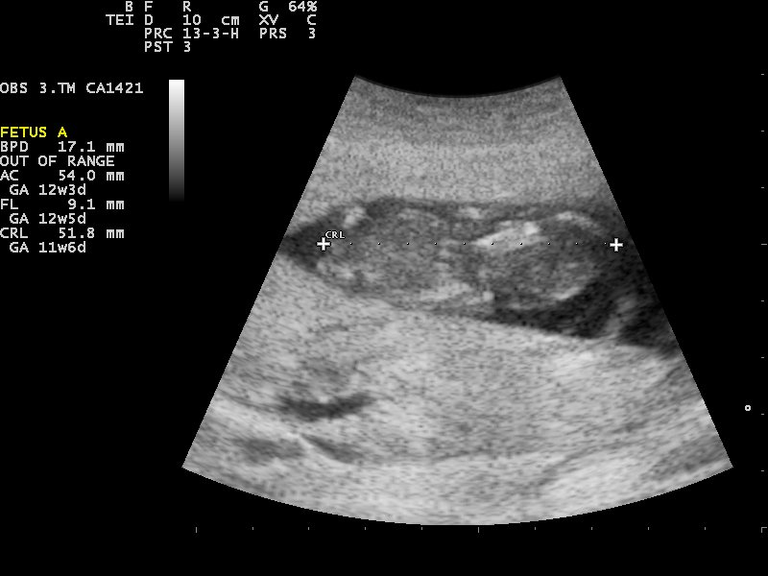Fetal demise: My story
I've had my fair share of experiences in the realm of pregnancy and childbirth, from witnessing the challenges and sometimes dramas to being directly involved (not as a surgeon) in various situations. One particularly poignant experience involved a sad case of fetal demise, a story from which my readers could glean valuable insights.
The fetus in question was less than five months old when the mother began experiencing unusual sensations. Her husband, coincidentally my own teacher, rushed her to a hospital where the attending physician attempted to detect fetal heartbeat but found none. They were then referred to a teaching hospital in town, where their worst fears were confirmed. However, an even more significant problem arose - the doctors were on strike, making the evacuation of the deceased fetus impossible for the time being.

After much negotiation, they reluctantly agreed to perform the evacuation two days later, albeit at a hefty cost. Imagine the husband's anguish, knowing his wife was carrying a lifeless fetus for 48 hours. No one knew precisely when the fetus had passed, and the doctors seemed indifferent to the potential risks to the woman's health, such as infections and severe complications.
There have been cases where a woman's body naturally expels fetal tissues, but even in these instances, infection risks remain high. Hence, medical intervention is often necessary and, more importantly, timely. In our case, a critical decision had to be made: wait for 48 hours or transfer to a private hospital.
After much deliberation, we opted for the latter. Once the nonviability of the fetus was confirmed, the doctors presented two options, each with its own cost implications:
Option one, called Dilation and Evacuation (D&E), involves a surgical procedure where the cervix is dilated, and suction and medical instruments are used to remove the fetus and placental tissues. It's typically performed in the second trimester, which seemed suitable here, albeit at a considerable cost.
Option two, the induction method, is similar to inducing labor during pregnancy delivery. The woman receives oxytocin shots to initiate uterine contractions, enabling the fetus to be expelled vaginally, similar to a normal birth. The cost of this option was comparatively more manageable.
There was also a third, less common option called hysterotomy, a surgical procedure akin to a Cesarean section. However, this wasn't deemed necessary in this case, leaving us with the induction method as the practical choice.
The woman was induced and closely monitored. About eight hours later, she gave birth to the stillborn child after a labor filled with agonizing pain. She was discharged 24 hours after the procedure.
The question that kept me pondering was, what could have caused the fetal demise? I'm a father of two healthy boys, and the thought of fetal demise never crossed my mind during their pregnancies. According to literature, it can result from genetic abnormalities, maternal health conditions like diabetes or infections, or issues with the placenta or umbilical cord.
My teacher and his wife received counseling after the evacuation, likely discussing the potential cause and how to prevent it in the future. In the end, I learned that preventing fetal demise involves early prenatal care, managing maternal health conditions, and avoiding harmful substances. It's a poignant reminder of the importance of vigilance and care during pregnancy.
What are your thoughts on this?
No me quiero imaginar el dolor de esa pobre mujer de parir a su bebito ya sabiéndolo muerto ☹️
Thanks for your contribution to the STEMsocial community. Feel free to join us on discord to get to know the rest of us!
Please consider delegating to the @stemsocial account (85% of the curation rewards are returned).
You may also include @stemsocial as a beneficiary of the rewards of this post to get a stronger support.
It is disheartening to read this urgly story of parents' loss of offspring. I can't imagine the abrupt change in feeling from the euphoria one lives with thinking about the sex and the look of the baby when given birth to, to agony and excruciation due to loss.
Unfortunately in this part of the world some "striking Doctors" and Politicians are no respecter of human lives. Little can be said on Doctors to quickly swift to action to safe the mother since the condition is ascertained.
From my little knowledge of immunology back in the days, rhesus factor crossed my mind especially if the lost baby wasn't the first pregnancy of that mother. It is a challenge when a woman is rhesus negative and she is carrying a rhesus positive foetus. The mother develops antibodies that sees the growing baby as "non-self", hence attacks the growing baby. Usually anti-D immunoglobulin is administered to de- sensitise the mother of the "foreign antigen" on the blood cell of the baby. However, if the mother becomes sensitised the memory is kept. Every time the sensitised mother becomes pregnant with a rhesus positive baby, the foetus is attacked and may lead to stillbirth. This is worthwhile to note especially by people who patronise "quack doctors" for medical services.
Well said. In the case of the Rhesus factor, how long does it take before the growing fetus is attacked? I mean, the fetus in this case is 4 months plus.